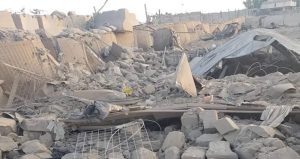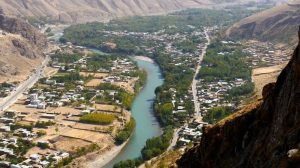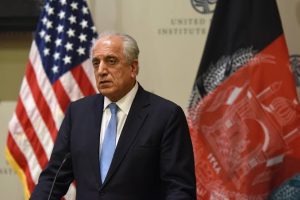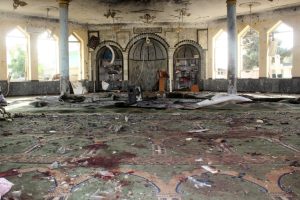A Look at the Security Council Resolution 2231 on Iran

 KABUL: (Middle East Press) While the conclusion of nuclear talks in Vienna hasn’t been verified and discussed by the authorities and politicians of both main participants; Iran and the USA; and Vienna document is merely known as “negotiation conclusion” which hasn’t been endorsed legally, the US government presented a draft to the Security Council of the United Nations in 14th July and by adopting it as a resolution attempted to face Iran with a fait accompli and tie Iran’s hand.
KABUL: (Middle East Press) While the conclusion of nuclear talks in Vienna hasn’t been verified and discussed by the authorities and politicians of both main participants; Iran and the USA; and Vienna document is merely known as “negotiation conclusion” which hasn’t been endorsed legally, the US government presented a draft to the Security Council of the United Nations in 14th July and by adopting it as a resolution attempted to face Iran with a fait accompli and tie Iran’s hand.
The resolution which was adopted unanimously by 15-nation body, endorsed the Joint Comprehensive Plan of Action (JCPOA) signed in Vienna by 5+1, EU and Iran. The resolution obligates all UN State members to ensure implementation of the JCPOA.
In fact this resolution is an attempt to restrict Iran and its influence on countries in the world in a diplomatic way and wants to make Iran committed to JCOPA before its final approval. The resolution was proposed to the Security Council while Iran’s parliament and the US congress were still investigating and voting on the agreement.
In other words, by presenting this draft to the Security Council, Americans have tried to force Iran to accept the JCPOA and if Iran rejects the agreement, they have determined the penalty in advance.
What follows is an analysis of the resolution 2231with 12 preamble clauses, 30 operative clauses, JCPOA text as Annex A and another statement as Annex B.
The Constitutionality of the Termination of Previous Resolutions
In the 1st operative clause, previous resolutions are mentioned. The 12th preamble clause terminates the provisions in the previous resolutions but the 7th operative clause states that the termination of them is subject to IAEA’s report confirming Iran’s implementation of JCPOA.
Although resolution 2231 terminates the previous resolutions but there’s no talk on invalidating them and this implies that the Security Council hasn’t invalidated them yet. If the sanctions return, they will be applied based on the previous resolutions. The termination of the previous resolution depends on the IAEA’s report; this is while the IAEA has proved numerous times that it’s not playing fair. The IAEA, being under the influence of US policies, has often written reports against Iran.
The Nature of Iran’s Nuclear Program
In the 8th preamble clause, it’s stressed that Iran’s full implementation of the JCPOA will contribute to building the confidence in the peaceful nature of Iran’s nuclear program. This is while this clause contradicts the ii clause in JCPOA, since JCPOA expresses that implementation will ensure the peaceful nature of Iran’s nuclear program.
It means that this resolution, which has a higher legal status, indicates that even in the case of Iran’s full implementation of JCPOA, the nature of Iran’s nuclear program will not be confirmed yet but it will only contribute to its peaceful nature. In other words, the issue of the nature of Iran’s nuclear program hasn’t been clarified clearly, unambiguously and finally.
Endorsing JCPOA and Forcing Iran to Comply with the Resolution
The Security Council resolution endorsed and acknowledged JCPOA in its 1st operative clause and in its 14th preamble clause, it indicates that the member States are obligated under the article 25 of the Charter of the UN to accept and carry out the decisions.
This clause practically turns JCPOA to an international commitment for Iran and other countries; hence the investigation and approval process of JCPOA in Iran would be meaningless and invalid. Therefore the termination of JCPOA by Iran is only possible when Iran takes the responsibility for beaching the resolution.
Iran and the IAEA
The 3rd operative clause in the resolution 2231, clarifies that Iran should cooperate fully as the IAEA requests to be able to resolve all outstanding issues as identified in IAEA reports.
It’s perceived that Iran is required to cooperate fully with whatever requests made by IAEA, this is while this issue is not mentioned in the dispute resolution mechanism of JCPOA, and in conclusion this clause allows IAEA to make any requests.
The Duration of the Resolution
This resolution is valid for 10 years after the Adoption Day according to the 8th operative clause. Meanwhile, the duration of phase 1 of restriction on Iran’s enrichment program in JCPOA is considered 8 years. The termination point of the former and the later are not synchronized.
This means that although Iran is able to reduce the restrictions in its enrichment program after 8 years, the Security Council resolution will not permit this and they will still monitor and inspect Iran’s nuclear program for the 2 remaining years.
‘Snap-back’ System for Sanctions
It’s expressed in the 11th operative clause that within 30 days of receiving a notification by a JCPOA participant State of an issue of non-performance of commitments under the JCPOA, the Security Council shall vote on a draft resolution to continue in effect the terminations of previous resolutions.
Furthermore in the 12th operative clause, it’s indicated that if the Security Council does not adopt a resolution in 30 days after the notification, all of the provisions of previous resolutions that have been terminated shall apply in the same manner as they applied before the adoption of this resolution, unless the Security Council decides otherwise or the country that has announced the notification takes it back.
This matter shows that the ‘snap-back’ mechanism of sanctions remains and each participant State in JCPOA can use this mechanism to blackmail Iran. For instance if France issues a claim against Iran and a new resolution is put for vote within the 30 days, the only country able to veto the resolution will be France itself.
Continuation of Some Sanctions
The 21st operative clause of the resolution allows some nuclear activities such as supply, sale, or transfer of items, materials, equipment, goods and technology, and the provision of any related technical assistance, training, financial assistance, investment, brokering or other services directly related to: (a) the modification of two cascades at the Fordow facility for stable isotope production; (b) the export of Iran’s enriched uranium in excess of 300 kilograms in return for natural uranium; and (c) the modernization of the Arak reactor based on the agreed conceptual design and, subsequently, on the agreed final design of such reactor. However in Annex B of the resolution one-third of the sanctions mentioned in the previous resolutions, are not terminated but only restricted and legally valid.
Special Legal System Set only for Iran
According to the 27th operative clause, the resolution decided that all provisions contained in the JCPOA are only for the purposes of its implementation between the E3/EU+3 and Iran and should not be considered as setting precedents for any other State or for principles of international law and the rights and obligations under the Treaty on the Non-Proliferation of Nuclear Weapons and other relevant instruments, as well as for internationally recognized principles and practices.
In fact this resolution excludes Iran from the NPT members instead of treating Iran under international law and shows that this inspection and monitoring system is particularly set for Iran.
Iran’s Missile Capability
In the 3rd article of Annex B is written: “Iran is called upon not to undertake any activity related to ballistic missiles designed to be capable of delivering nuclear weapons, including launches using such ballistic missile technology, until the date eight years after the JCPOA Adoption Day or until the date on which the IAEA submits a report confirming the Broader Conclusion, whichever is earlier”
In the 4th article of the same annex, it is mentioned that sale and supply of non-ballistic missiles capable of delivering nuclear weapons is permitted according to the provided list by Missile Technology Control Regime (MTCR/TEM/2014/Annex).
As it’s obvious, the 3rd article in Annex B is applying a full sanction on ballistic missiles in Iran. Although apparently the sanctions on non-ballistic missiles have been removed but differentiating ballistic missiles from non-ballistic ones won’t be an easy task. Meanwhile Iran’s long-range missile (Shahab) is also defined as a ballistic missile.
Conventional Arms
It’s stated in the 5th article of Annex B: “All States may participate in and permit, provided that the Security Council decides in advance on a case-by-case basis to approve: the supply, sale or transfer directly or indirectly from or through their territories, or by their nationals or individuals subject to their jurisdiction, or using their flag vessels or aircraft, and whether or not originating in their territories, to Iran, or for the use in or benefit of Iran, of any battle tanks, armoured combat vehicles, large caliber artillery systems, combat aircraft, attack helicopters, warships, missiles or missile systems, as defined for the purpose of the United Nations Register of Conventional Arms, or related materiel, including spare parts, and the provision to Iran by their nationals or from or through their territories of technical training, financial resources or services, advice, other services or assistance related to the supply, sale, transfer, manufacture, maintenance, or use of arms and related materiel described in this subparagraph. This paragraph shall apply until the date five years after the JCPOA Adoption Day or until the date on which the IAEA submits a report confirming the Broader Conclusion, whichever is earlier.”
The clause ‘provided that the security council approves’ indicates that the sanctions will terminate only if the Security Council approves and this means that a full sanction will apply for 5 years on both supply and sale of Conventional Arms.
Continuation of Inspecting all Cargos to and From Iran
According to the 7th article in Annex B, inspection of Iran’s cargo including seaports and airports will continue; in other words Iran accedes to inspection of its cargos all around the world.






